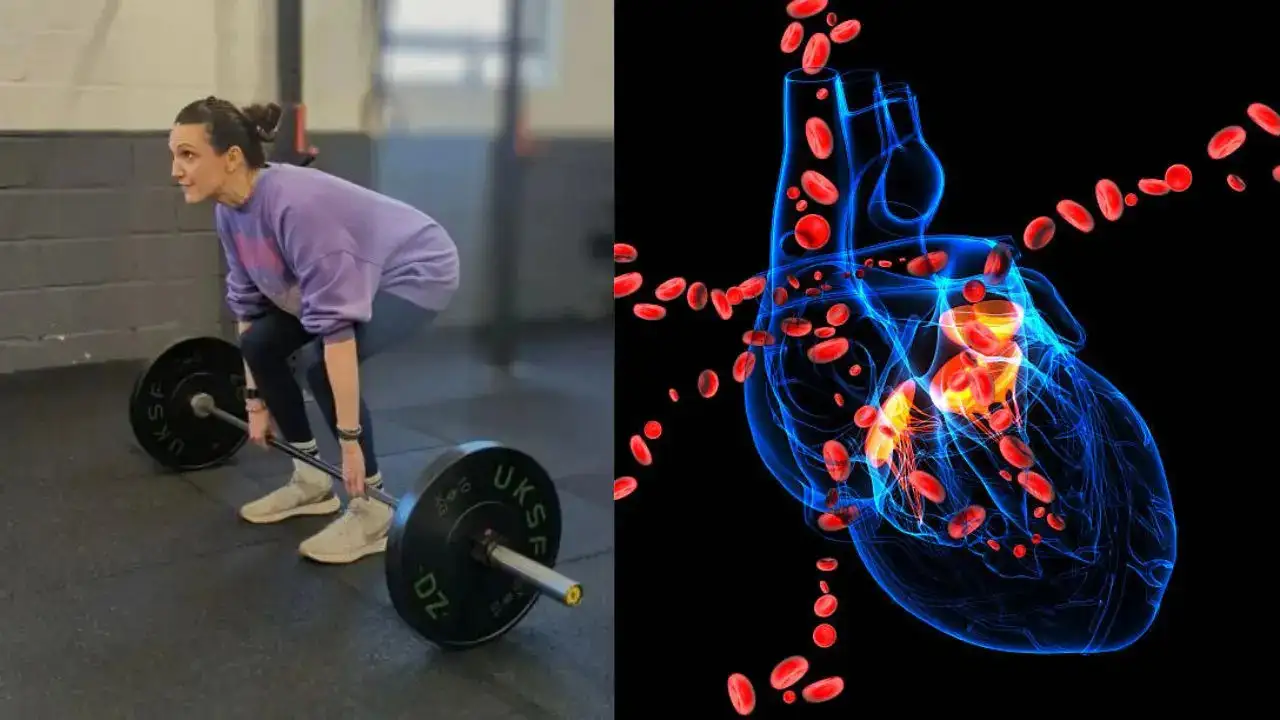
For 45-year-old Marie-Anne August, gymming was a regular affair until one day while lifting weights she became ill
A fitness lover was given just 24 hours to live after she felt a rip in her chest post a workout session. For 45-year-old Marie-Anne August, gymming was a regular affair until one day while lifting weights she became ill.
After consulting her doctor, Marie-Anne had blood tests and an ECG, which said nothing was wrong with her. But her condition deteriorated. "I couldn't breathe, and the pain was absolutely excruciating,” the NHS communications worker from Devon, told The Sun.
However, another trip to the emergency services and more tests later, she was diagnosed with an aortic dissection - a life-threatening condition where a tear in the inner layer of the aorta, the major artery carrying blood from the heart, allows blood to flow between the layers of the aortic wall, potentially leading to a rupture or reduced blood flow to vital organs.
"The diagnosis took me by surprise because I thought I was so fit," she says. “When the aortic dissection happened, I felt a ripping in my chest, followed by a bubbling feeling." According to doctors, an aortic dissection is extremely common among those aged over 65 years. Without quick diagnosis and care, an aortic dissection can cause sudden death.
Globally, every year 5 to 30 people per one million have an aortic dissection.
Marie-Ann was rushed for emergency surgery as doctors said the time was not in her favour. "I didn’t realise how serious it was until I got to the hospital, then was told I had less than 24 hours to live and that they had to operate immediately. They also listed all the complications that could occur—stroke, loss of limbs, paralysis, and lots of other things,” she added.
Her operation was successful, and she recovered later.
What causes aortic dissection?
According to doctors, aortic dissection happens due to a breakdown of the cells in the walls of your aorta—which mostly goes on silently for many years before the weakened area finally gives way. It not only results in a tear but also severe pain.
Healthcare providers believe that a basic weakness in the aortic wall (possibly inherited) causes most aortic dissections. In other cases, the stress from constant high blood pressure can weaken the aorta wall. This can lead to a tear and dissection.
Tears in the aorta typically occur in areas where the stress on the wall of the aorta is highest, like your ascending aorta. Aortic dissection in the ascending aorta is nearly two times more common than those that happen in the descending aorta.
What are the symptoms of aortic dissection?
Doctors say the most common feature of aortic dissection is its abrupt start. It can happen at any time, most commonly from a sudden rise in blood pressure levels due to heavy exertion. However, it also happens when you may be doing nothing, resting, or even when you are sleeping. There are no specific warning signs of aortic dissection. Common aortic dissection symptoms you may experience include:
- Sudden, severe, sharp pain in your chest and back
- Severe pain in your abdomen
- Breathlessness
- Fainting and dizziness
- Low blood pressure
- Muffled sounds from your heart
- Rapid and weak pulse
- Incessant and heavy sweating
- Confusion
- Loss of vision
Symptoms of stroke, include weakness or paralysis on one side of your body or trouble talking
Get Latest News Live on Times Now along with Breaking News and Top Headlines from Health and around the world.


